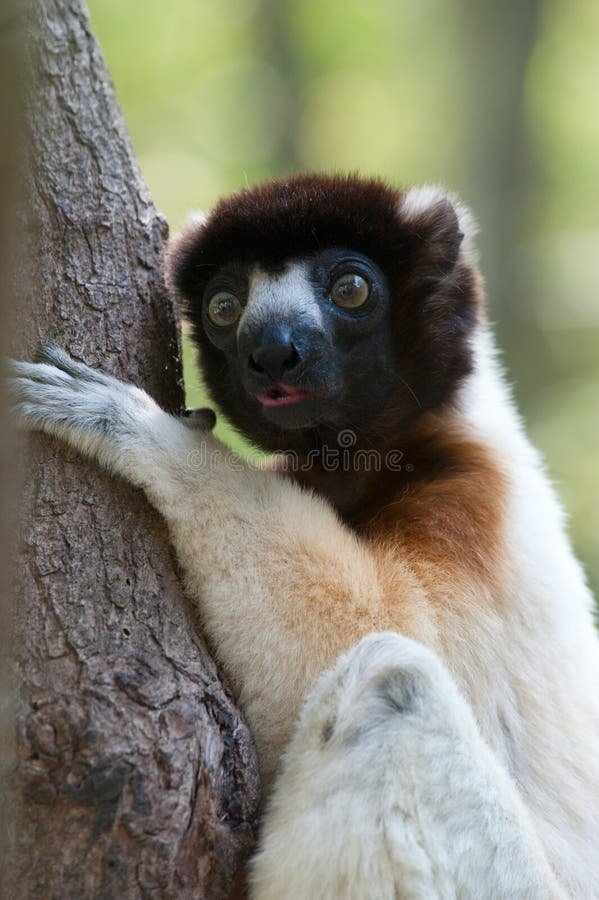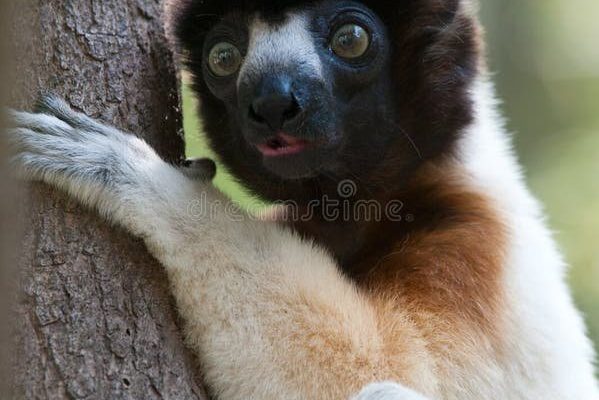
You might be picturing them as adorable little beings that pose no threat, but every animal has its quirks and potential for unexpected behavior. Let’s dive into the world of sifakas, exploring their nature, behavior, and the question on many minds: can they actually be dangerous to us?
What Are Sifakas?
Sifakas are a type of lemur, and they belong to the family Indriidae. They’re known for their incredibly distinctive appearance—most notably their large, bright eyes and long limbs that seem perfectly crafted for tree-dwelling. They’re medium-sized primates, typically weighing between 5 and 10 pounds, and they sport beautiful fur that varies in color from white to brown, depending on the species.
These fascinating creatures are mostly active during the day, foraging for leaves, fruits, and flowers in the treetops of Madagascar’s rainforests. They have a social structure that’s somewhat complex, living in groups that can range from 2 to 10 individuals. Their playful and curious nature makes them entertaining to observe, but their habits can sometimes lead to misunderstandings with humans.
Here’s a fun fact: when sifakas move, they don’t walk like most animals; instead, they leap from tree to tree with impressive agility. This clears up the common misconception that they might be clumsy—quite the opposite!
Are Sifakas Aggressive?
You might be wondering about their temperament. While sifakas are generally not aggressive, their behavior can change if they feel threatened. Like many wild animals, they instinctively defend themselves and their territory. If humans approach too closely or corner them, they might react in self-defense.
In particular, males can become quite protective during mating season and may display aggressive behaviors toward perceived threats, which can include humans. It’s important to remember that their first instinct is usually to escape danger, but if they feel trapped, they might resort to biting or scratching.
So, while encountering a sifaka in the wild is usually a peaceful experience, keep your distance and respect their space. Just like meeting any wild animal, it’s best to observe from a safe distance.
Interactions Between Sifakas and Humans
Interactions between humans and sifakas can occur, especially in areas where humans encroach upon their habitats. Unfortunately, these interactions can lead to conflicts. For instance, in Madagascar, as deforestation continues, the animals often find themselves searching for food near human settlements. This can lead to them rummaging through gardens or trash, which is not only risky for the sifakas but can also create frustration for locals.
While most encounters are harmless, some people might react negatively if they feel their property is threatened. It’s crucial to remember that sifakas are only looking for food and survival, just like any other creature. Educating local communities about these animals can reduce misunderstandings and create a safer environment for both humans and sifakas.
Let me explain: when we understand their behavior and habitat needs, we can coexist peacefully. Community awareness programs can highlight the importance of protecting these unique creatures and how to avoid negative encounters.
Potential Risks of Sifakas
While sifakas aren’t known to attack humans outright, there are still some potential risks to consider. First, if cornered, they can inflict painful bites or scratches. Their sharp teeth and claws are designed for climbing and foraging in the wild, so they can certainly cause harm in a defensive situation.
Second, there’s the risk of disease transmission. Like many wild animals, sifakas can carry parasites or diseases that might transmit to humans. It’s not common, but it’s wise to exercise caution and ensure that any interaction with wildlife is handled with care.
Remember, wild animals are often unpredictable. Even the most adorable creatures can react unexpectedly if they feel threatened, so always prioritize safety for both yourself and the animal in any encounter.
How to Safely Observe Sifakas
If you’re lucky enough to be in Madagascar and want to see sifakas, it’s essential to follow some basic safety tips. Here are a few ways to make your observation both enjoyable and safe:
- Keep a respectful distance: Always observe from afar. Use binoculars for a closer look without invading their space.
- Do not feed them: Feeding wild animals can create dependency and lead to conflicts with humans.
- Travel with a guide: Experienced guides can help navigate the best areas for sightings while ensuring your safety and the animals’ well-being.
- Educate yourself: Learning about their behaviors and ecology will enhance your experience and help you understand the importance of conservation.
By following these tips, you can enjoy the company of sifakas while respecting their wild nature.
Conservation and Sifakas
Conservation efforts are critical for the survival of sifakas and their habitats. As Madagascar faces significant deforestation and habitat loss, several organizations are working hard to protect these unique primates. They focus on habitat restoration, community education, and sustainable practices that benefit both the locals and wildlife.
Here’s the thing: when we invest in conservation, we’re not just saving animals; we’re preserving an entire ecosystem. Supporting sustainable tourism and conservation initiatives can make a huge difference in protecting sifakas and the biodiversity of their home.
If we collectively prioritize these efforts, we create a future where humans and sifakas can coexist peacefully, reducing the chances of dangerous encounters while ensuring that these remarkable creatures thrive.
So, can the sifaka be dangerous to humans? The answer isn’t cut and dry. Generally speaking, sifakas are not aggressive and prefer to avoid conflict, but they can defend themselves if they feel threatened. Understanding their behavior, respecting their space, and being aware of potential risks can help foster peaceful interactions.
As we learn more about these fascinating creatures and their needs, we can appreciate their beauty while also ensuring both our safety and theirs. With education, empathy, and active conservation efforts, we can enjoy the wonder of sifakas without fear. So next time you think of these remarkable lemurs, remember their charm— and give them the space they need to thrive in their unique world.

